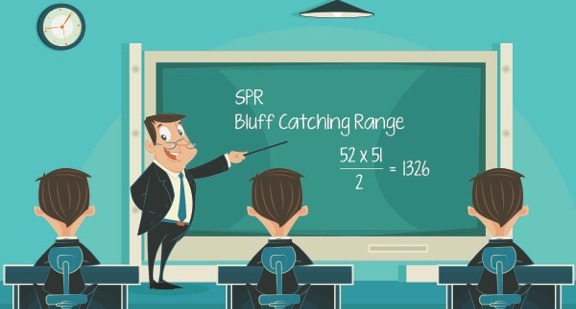






Explain Poker Like I’m Five: Range Mergingby Card Player News Team | Published: Dec 23, 2015 |
|
|

When you’ve played poker for years, it’s easy to forget that technical poker speak may as well be a different language. Many players just picked up a deck of cards for the first time and are wondering what the hell a reverse implied range merge against a large stack to pot ratio is.
Maybe you are new to poker as well and want to start analyzing the game at a deeper level, but the lingo and foreign concepts get in the way. To help, _Card Player_ brings you this series, Explain Poker Like I’m Five.
Every issue, we’ll take on a new term or idea, perhaps one you might come across elsewhere in this very magazine, and we’ll break it down to its simplest components.
The Concept: Range Merging
What Is It?
The opposite of having a polarized range is having a merged range. In a spot where you are likely to only be betting either very strong or very weak hands, you instead bet a medium-strength hand that can get worse hands to call or better hands to fold.
Okay, Now Explain It Like I’m Five
There are many boards where the average player would only bluff or bet the nuts. But a player who merges his range has the ability to bet a hand somewhere between those two extremes, which makes it very difficult for his or her opponents to put them on an accurate hand. When players can’t put someone on a hand, they are likely to make mistakes.
Give Me An Example
You raise preflop with J 10
10 and get called by the button. The flop comes down 10
and get called by the button. The flop comes down 10 8
8 7
7 and you make a continuation bet, which is called. The turn is the 2
and you make a continuation bet, which is called. The turn is the 2 and you check. Your opponent checks behind and the river is the J
and you check. Your opponent checks behind and the river is the J .
.
Here is a good spot to try and merge your range. The river improved your hand by giving you two pair, but it also created a really ugly board to navigate. Under normal poker conditions, most players would check here, because a bet is very polarized. Players who bet in this spot almost always have a strong hand like one that contains a nine for a straight or they have a complete bluff like a busted flush draw.
But with two pair, you can make a bet and completely throw your opponent off by merging your range. The bet accomplishes a couple of things. Because your opponent thinks you are polarized, he may try to pick off what he perceives to be a bluff attempt with a hand as weak as one pair. That gives you thin value.
But let’s say that your opponent has a better hand, like a set of sevens. Now, because you bet in a polarized spot, he could actually fold the best hand, assuming he is up against a straight. Your bet is essentially a bluff and a value bet at the same time, otherwise known as a range merge.
It’s worth nothing that if you merge your range too often, opponents will start adjusting by slow playing their strong hands, so it’s important to stay balanced. ♠
Features
The Inside Straight
Strategies & Analysis